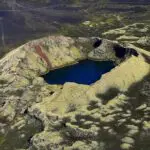Despite Iceland being relatively isolated for centuries, it wasn’t isolated enough to skip significant events that happened in Europe. Instead, they usually happened a bit later. The Black Plague raged in Europe between 1348 and 1350. It did not reach Iceland for a simple reason; no ships came to Iceland while the plague raged in the Nordic countries and England. Either the ships couldn’t be manned, or the crewmembers died on the way. It reached Iceland in 1402 after the plague ravaged Italy again in 1400. The epidemic never reached the same heights in Europe as it had 10 years previously.
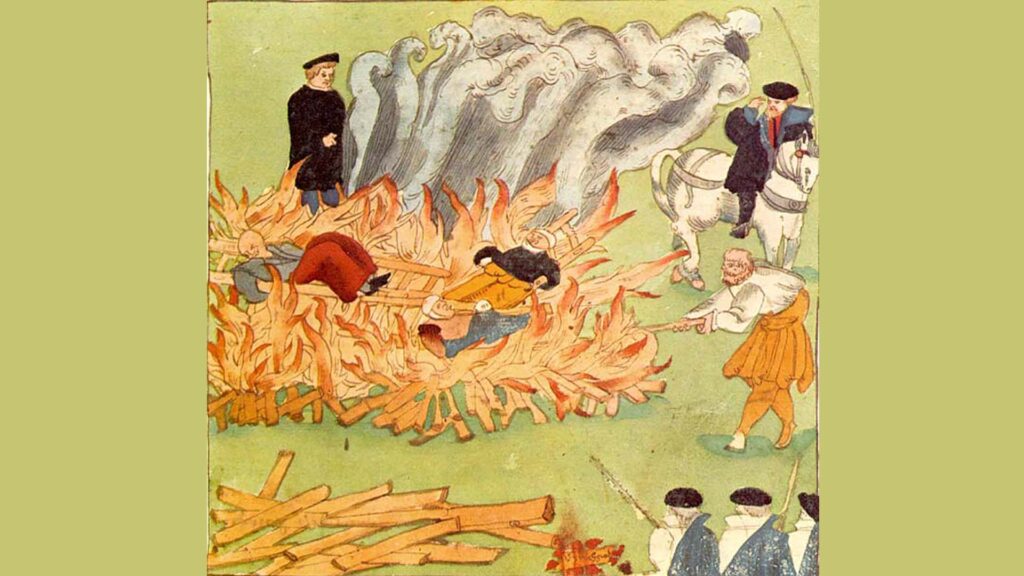
In the same manner, witch hunts didn’t reach Iceland with the same zeal until the 17th century, when it was slowly dying down in Europe.
Much of the information in this blog post is from The Museum of Icelandic Sorcery and Witchcraft, which we highly recommend you visit.
How many were accused of witchcraft in Iceland?
In 1617, Christian IV of Denmark sent a letter to Alþingi stating that all people sentenced for witchcraft should be burned. About 170 people were charged with witchcraft in Iceland, and 10% were women.
Over 30% of cases dealt with people using magic to cause illnesses, and another 30% dealt with the usage of magic symbols and books. Other cases deal with the death of livestock, zombies, remedies, weather magic, and other sorcery to make one’s life easier. Blasphemy is also often mentioned as part of the charges.
Of those 170 people charged with witchcraft, 21 were burned and of them was only one woman. 25% of those accused of witchcraft were whipped, and another 25% were acquitted. A few were exiled, and about 20 people fled before their sentence was issued.
One way for those accused of witchcraft in Iceland to be pardoned was to find 12 men to vouch for them.
Occasionally, accusations were dropped. In 1708, a man called Þorsteinn was accused of writing for sorcery. However, it was waved as it was written during drunkenness.
The Witch Craze came late

The witch craze is believed to have started in 1654 in Iceland when three men were burned in Trékyllisvík in Strandir in the West Fjords. At that time, witch hunts were slowly dying down in Europe. The last execution for witchcraft in England was in 1682. In the Dutch republic, the date isn’t as precise, but it is believed the last execution was in 1613; in Denmark, it was in 1693, 1695 in Norway, and 1704 in Sweden. France, Germany, and Poland took a bit longer to stop charging people with witchcraft, and the last executions occurred in 1745, 1775, and 1783 respectively. The last execution for witchcraft in Iceland was in 1683.
But even if the witch craze began in 1654, the first verified person to be burned for witchcraft was Jón Rögnvaldsson from Eyjafjörður in 1625.
The Devil is Rarely Mentioned
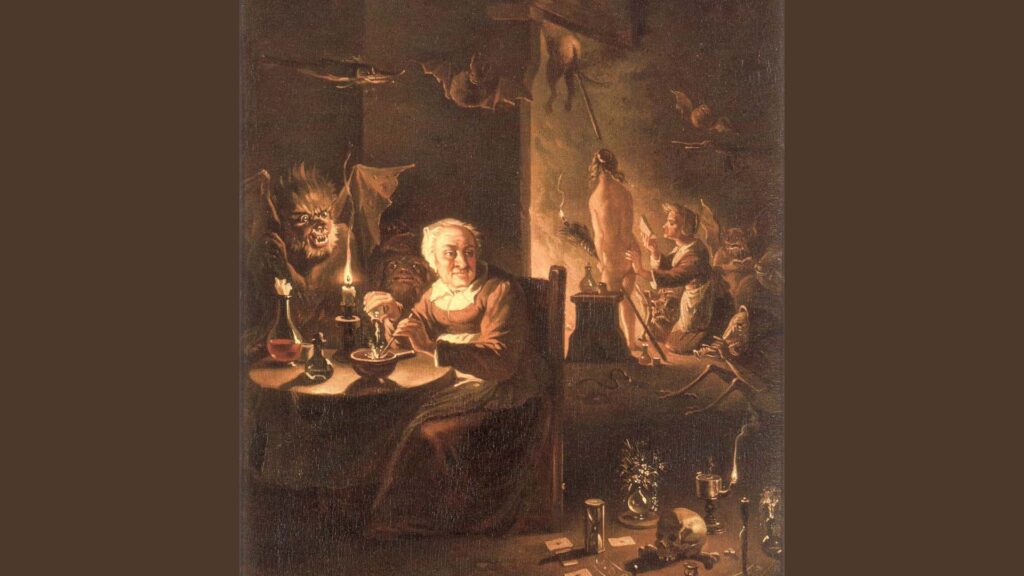
The devil was rarely mentioned in witchcraft cases. Witches’ assembly and torture are never mentioned, apart from women being in the vast minority of those burned.
A nun at Kirkjubæjarklaustur Convent is said to have been burned in the mid-14th century. She was said to have given herself to the devil, mistreated God’s body, and slept with many men. For this, she was burned.
The First and Last Man to be Burned for Witchcraft
As we mentioned before, the first man to be burned for witchcraft in Iceland was Jón Rögnvaldsson from Eyjafjörður in 1625.
A farmer called Sigurður said he had been acrimoniously harassed by a zombie and blamed Jón Rögnvaldsson for it. He said he had summoned the zombie to hurt him. The zombie didn’t hurt Sigurður but did other things, like kill a few horses.
The county magistrate decided to investigate, but Jón denied that he had anything to do with witchcraft and magic. However, when his home was searched, they found pages with runes on them and ominous drawings. That was enough for the magistrate to sentence him to be burned alive, and they ensured the sentence would be fulfilled. Jón’s case never came before Alþingi, and it would be 29 years until the next person was burned alive.
The last one burned for witchcraft in Iceland
The last person to be sentenced to death by burning was Sveinn Árnason in 1683. He was convicted for having caused the archdeacon’s wife’s illness. She was known for her drinking, but not much is known about the case.
Sveinn was from Nauteyri in Ísafjarðardjúp Fjord in the West Fjords. Still, he was burned in Arngerðareyrarskógur Forest at the bottom of the Ísafjarðardjúp Forest. Rumour has it that it had been decided to take him to be charged before Alþingi, but when they had come to the bottom of the fjord, they couldn’t be bothered to go further and burned him there.
Sveinn wasn’t the last person to be sentenced to death by burning for witchcraft. Klemus Bjarnarson has the dubious honor of being the last person. He was sentenced to death in 1690 for having caused the death of the wife of a neighboring farmer. However, this sentence was never fulfilled. Christian V of Denmark, the grandson of Christian IV, had sent a letter a few years prior saying that all death sentences should be sent to him for review. Klemus benefitted from this as the king overturned the ruling and sentenced him to lifelong exile in 1691. He didn’t live long and died from some illness in Copenhagen in 1692.
The only woman to be burned for witchcraft
Þuríður Ólafsdóttir is the only woman that was burned for witchcraft in Iceland. With her was her son Jón Helgason. They were burned in 1678.
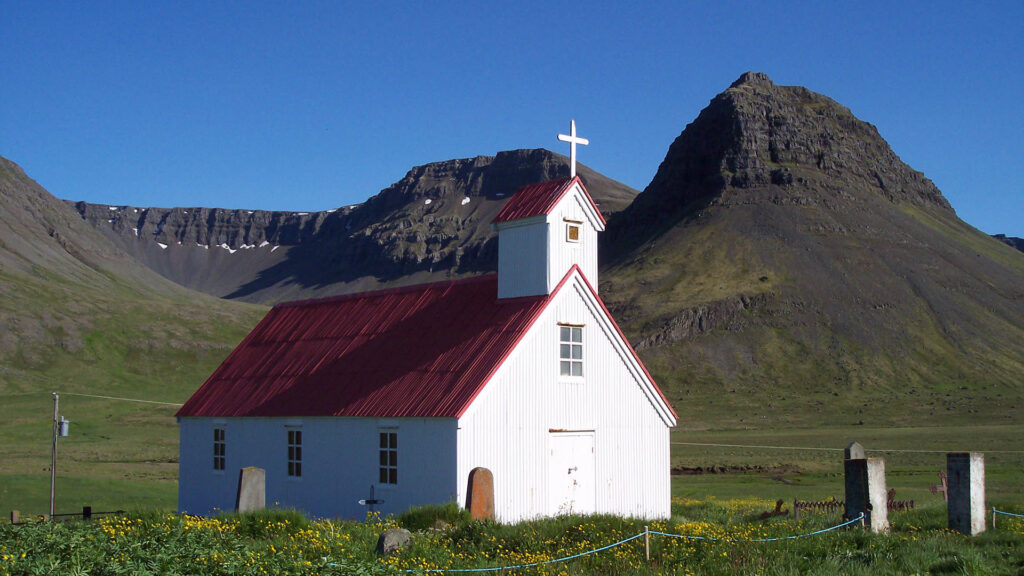
The Selárdalur Cases – How it began
At the turn of the year 1668-69, the god-fearing madam in Selárdalur in Arnarfjörður, Helga Halldórsdóttir, fell ill with a strange disease. She seemed possessed by an evil spirit and lay sick until the summer.
Helga’s husband was the priest Páll Björnsson. At the time, he was considered one of the most learned clerics in the country. Some fifteen years earlier, he had published a book on witchcraft and devil worship, which the church’s people fought against. The epitome of witchcraft in Europe, the Witch’s Hammer, is reflected in Páll’s work. However, the magic described there had little to do with Icelandic sorcery. Eggert the rich, Páll’s half-brother, was a district magistrate and a decisive authority regarding witchcraft cases. The brothers had spent time in Denmark and Germany and thus had first-hand knowledge of European witch trials.
While Helga was sick in bed, the house became so haunted that everyone had to flee it for a time. Helga thought she knew who was behind it. A man called Jón Leifsson had asked for one of her maid’s hands in marriage, but Helga had been vehemently against it. He was brought in and questioned. He admitted to some sorcery, and Eggert, the district magistrate, sentenced him to be burned for witchcraft in 1669. Jón had said before he was killed that Erlendur Eyjólfsson had taught him everything he knew.
Páll sent a letter to two lawyers and described Erlendur as the devil’s cesspool, from which everything evil that people might lust for flows. He was the master of those who had learned and wanted to learn and the origin of all the evil in the area. Getting such a letter from such a well-respected man meant that Erlendur was sentenced to death for witchcraft. He did admit that he had used witchcraft and taught others.
An Innocent Man Burned Alive
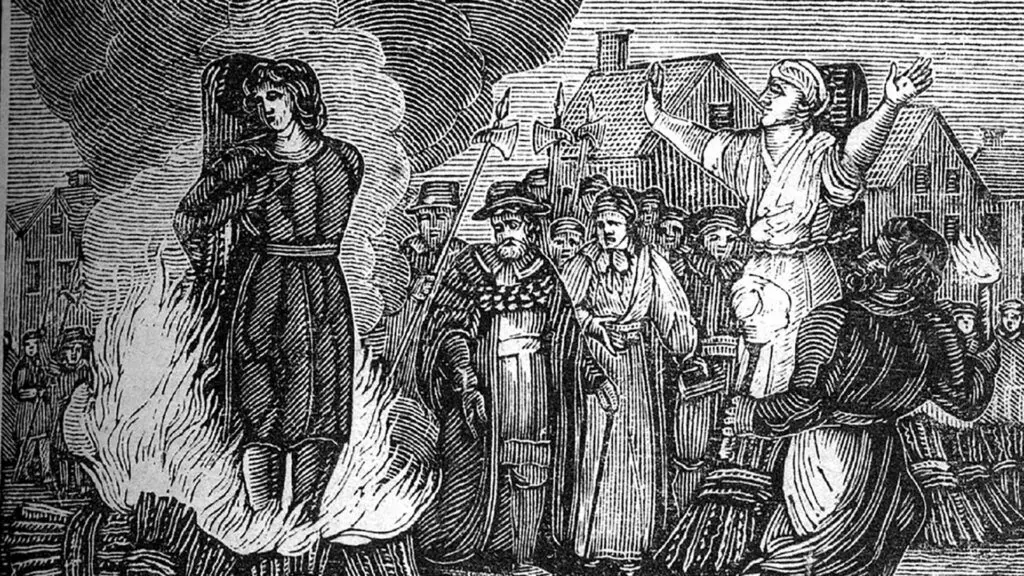
This is how life went in Selárdalur for the following years. Magnús Bjarnason and Lassi Diðriksson were burned for witchcraft in 1675. They were said to have caused Helga and others in the household to become ill. Lassi denied it profusely and had never played with magic. Still, it was decided he was guilty because he did not manage to find 12 men to vouch for him. It took a while to burn him. The fire went out three times due to rain, and Eggert, the district magistrate, broke his foot on his way home from Alþingi. That proved to people that Lassi had been innocent.
This is the situation in Selárdalur into which Þuríður and Jón move. In 1678, Páll’s wife Helga got ill again. Páll believed that this time it was the fault of Þuríður and Jón, but the reasoning behind it is unknown. He sent a letter to two district magistrates, one of which is his brother, asking them to investigate. They are quickly sentenced to death.
This case, however, got people talking. The Archdeacon in Skagafjörður questioned the case in annals. They had lived in his county the year before, and Þuríður had never been connected to sorcery. He mentioned that her son wasn’t very intelligent. Still, it could have happened that he said they had traveled over waters and rivers without horses and boats to explain how much his mother knew. This was believed, and they were burned for witchcraft in Iceland.
They seemed to have been burned simply by what Páll said and possibly because they were outsiders.
Interesting characters
The most famous characters have often become famous, or possibly infamous, through folklore, even if we know they existed. Their supernatural abilities are, however, up for question. But who knows, maybe they knew something most of us do not know today.
Galdra-Loftur – Magic-Loftur
Loftur Þorsteinsson was an Icelandic intellectual in the 18th century about whom many legends have passed and is best known under the name Galdra-Loftur. He was born in 1702, but it is unknown when he died. He grew up to some or all extent with Þormóður Eiríksson, who was considered a powerful poet and skilled in the magical arts.
Loftur was sent to the school in Hólar in 1716. According to the legends, he practiced magic at school. In Jóhann Sigurjónsson’s play, Galdra-Loftur, the magic became his undoing while he was still in Hólar. But, Loftur actually completed his matriculation exam in 1722, and nothing is known about him in certainty after that.
In the folk tales of Magic-Loftur, it is said that he lost his mind after he failed to get the magic book Rauðskinna and was then placed with an elderly priest in Staðarstaður. He escaped his guard, rowed out alone in a small boat, and it was said that a gray and hairy hand had been seen coming up and dragging the boat into the depths.
Regardless of the stories, it is certain that Loftur died young, but it is uncertain when it was or how his death happened.
Sæmundur fróði – Sæmundur the learned
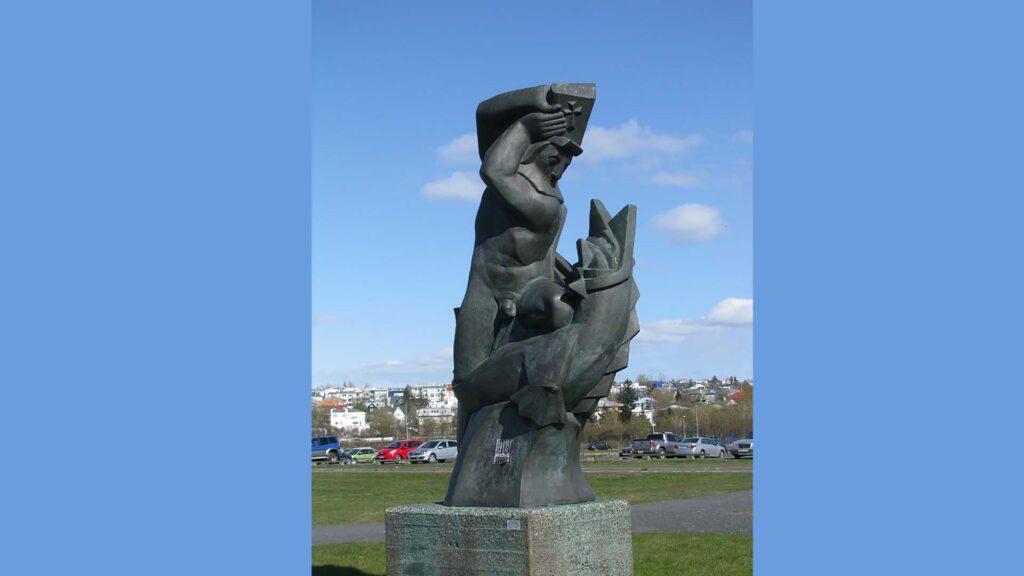
We have told you a bit about Sæmundur before, but he is one of Iceland’s most famous historical figures. It’s not for his deeds he most certainly did but for the otherworldly tales connected to him. He was born in 1056 and died on 22 May 1133 and was a chieftain and priest in Oddi in Rangárvellir.
Sæmundur is most famous for having been in the “Black School,” France or Germany, and having outmaneuvered the devil more than once. For example, he traveled from mainland Europe to Iceland on the back of the devil, who was in the form of a seal.
Due to how well educated Sæmundur was, stories quickly spread about him being skilled in the magical arts.
The Icelandic Vampire Tilberi
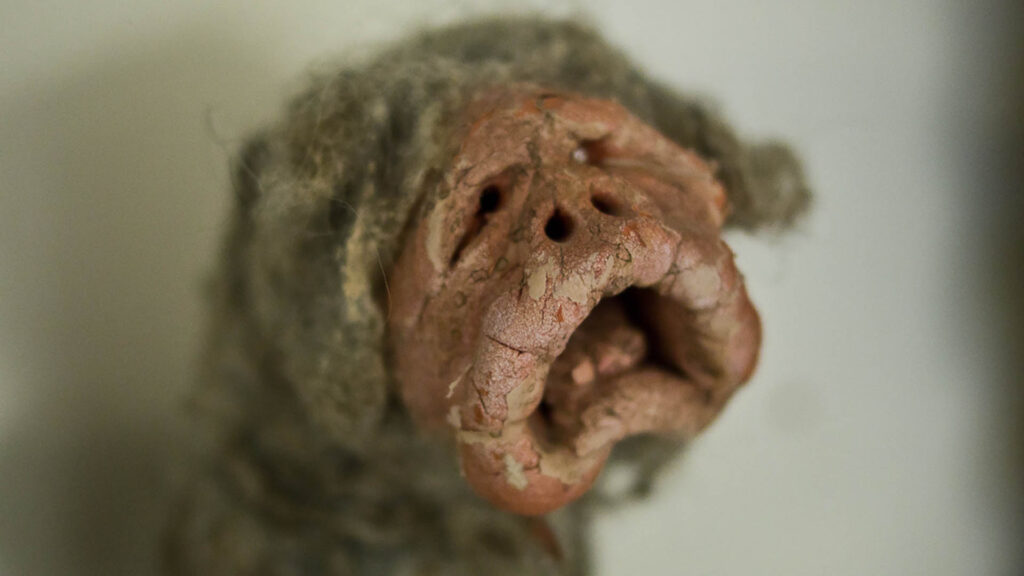
Tilberi is a creature in Icelandic folklore, a kind of zombie or even a vampire, which people (mainly women) created with the help of magic from a human rib and kept by their body, often wrapped in gray fleece. The tilberi were used to sneak into nearby farms and milk other people’s cows and ewes and take the milk home to the house of the tilberi’s mother.
To create a tilberi, people took a human rib from holy soil and kept it on their bare chests. When they went to the altar, they spat consecrated Mass wine in their bosoms onto the rib no more than three times until it came to life. The tilberi was intended to suck the milk from the neighbor’s cows and ewes and bring it home to its master. It then usually puked the milk through a pantry window into a container.
When it arrived, it warned its mother with these words: “Full belly, mother.” She replied, “Let it loose, son,” or “Puke it in the butter churn, boy.” Rarely did the mistress lack butter, but it was thought crumbly and turned into foam if a cross sign was made over it or in it. This butter was called tilberi’s butter.
The women who kept these servants made a little wound on their inner thighs, wrapped the tilberi around their waists, and let them suck the wound. They were called tilberi’s mothers and were traditionally unsightly.
Accusations of owning a Tilberi
In 1635, a notable case emerged involving Álfdís Jónsdóttir from Kjalarnes, who was accused of possessing a tilberi, allegedly passed down from her mother. This suspicion led their parish priests to bar both mother and daughter from church attendance. However, upon review, the synod found the accusations to be baseless, as no concrete evidence was presented to prove the existence of the tilberi. Consequently, Álfdís and her mother were exonerated, while the sheriff faced reprimand for the unfounded allegations.
One historical account suggests that in 1588, a woman was condemned to death for possessing a tilberi. However, the credibility of this source remains uncertain.
Magic Staves and Symbols
The origin of spells and magic symbols remains a mystery, with some tracing back to medieval mysticism and Renaissance archeology while others possibly connected to Norse religion and pagan-runic culture. Manuscripts preserve many magic spells people were accused of using in the 17th century. Understanding the purpose of these magic symbols can provide insight into the lives and concerns of ordinary people.
Ægishjálmur
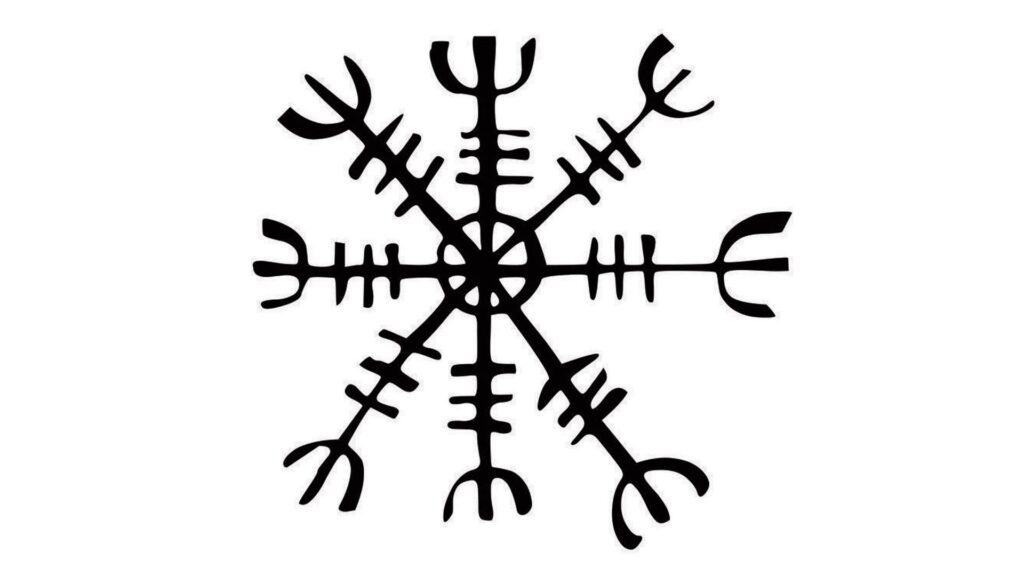
The Helm of Awe, or Ægishjálmur, is possibly the most famous Icelandic magic rune. It is very popular for tourists to have it tattooed, for example.
It is a defensive symbol and protects against evil spirits, enemies, and the aggression and anger of rulers. The stave must be carved into a lead plate, which is then pressed onto the forehead between the eyes and into the skin. The sorcerer must also recite this: I wash away the enmities of my enemies, plundering, and anger of rich men.” Doing so gives them the courage to go against what they fear.
Rosahringur minni

The lesser circle of protection, or rosahringur minni, is engraved on a dark red skin of a female dog, on the flesh side. Blood from a black cat whose throat has been cut at a full moon is applied to the incision.
The stave offers good protection against zombies and witchcraft in Iceland. When it is used, it is good to have this enchantment alongside it:
I hope I get help from the earth, victory from the sun, bliss from the moon, support from the stars, and strength from the angels of the Lord.
Nábrækur
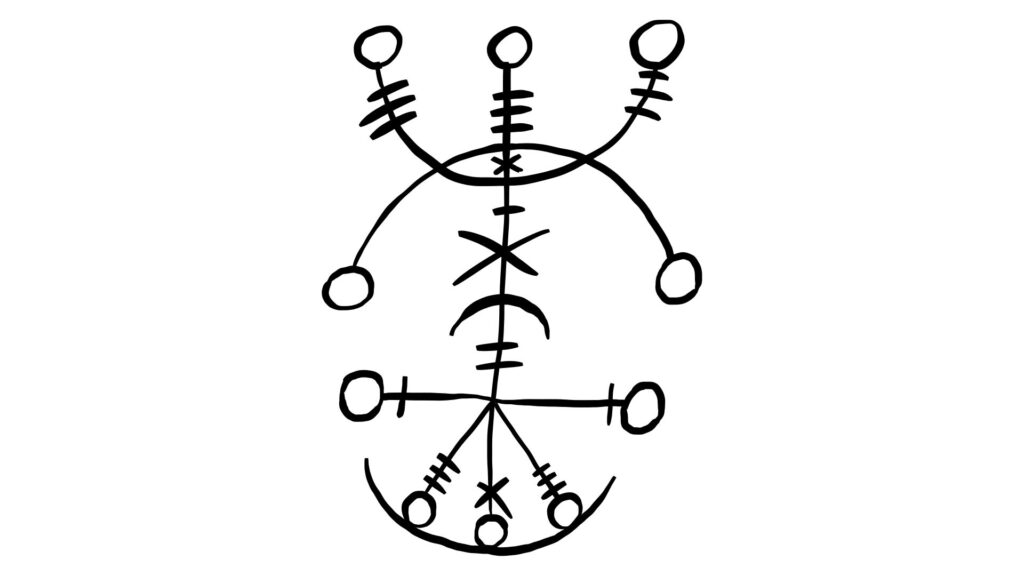
Necropants or Nábrækur are one of the most famous items connected to Icelandic sorcery. These are a pair of pants made from the skin of a dead human, which is then believed to be able to produce an endless supply of money. However, it is doubtful that these pants existed outside of folklore.
The ritual for making necropants is as follows:
If you want to make your own necropants (literally, nábrók), you have to get permission from a living man to use his skin after his death. After he has been buried, you must dig up his body and flay the corpse’s skin in one piece from the waist down.
As soon as you step into the pants, they will stick to your skin. A coin must be stolen from a poor widow and placed in the scrotum along with the magical sign, nábrókarstafur, written on a piece of paper. Consequently, the coin will draw money into the scrotum so that it will never be empty as long as the original coin is not removed. To ensure salvation, the owner has to convince someone else to take ownership of the pants and step into each leg as soon as he gets out of it. The necropants will thus keep the money-gathering nature for generations. (Source)
“Að fá stúlku”
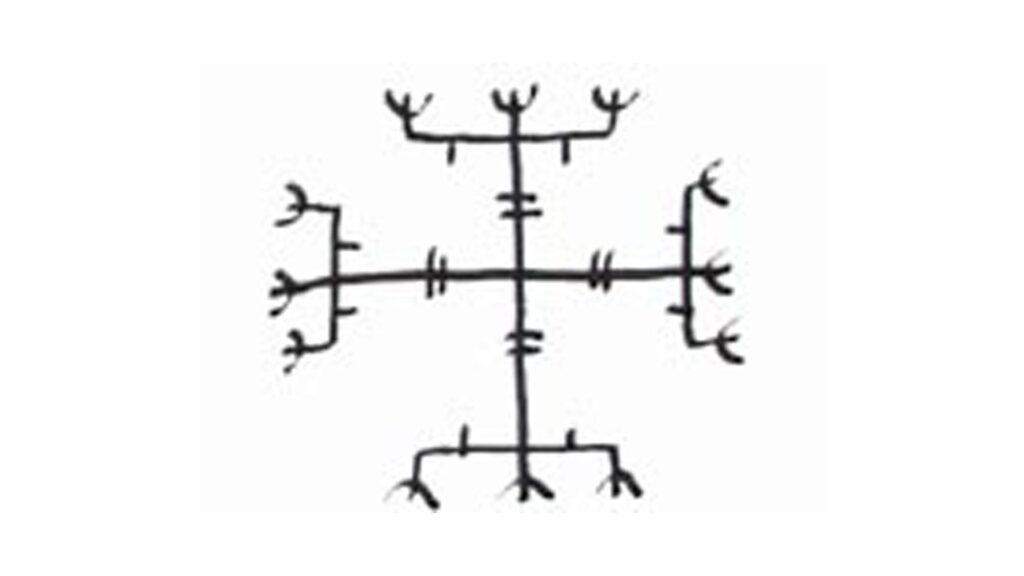
Not all staves are difficult to use; this one is a good example. If you want to get a girl, carve this stave onto bread or cheese and give it to her to eat. And she will be yours.
Please signup HERE for our newsletter for more fun facts and information about Iceland!








